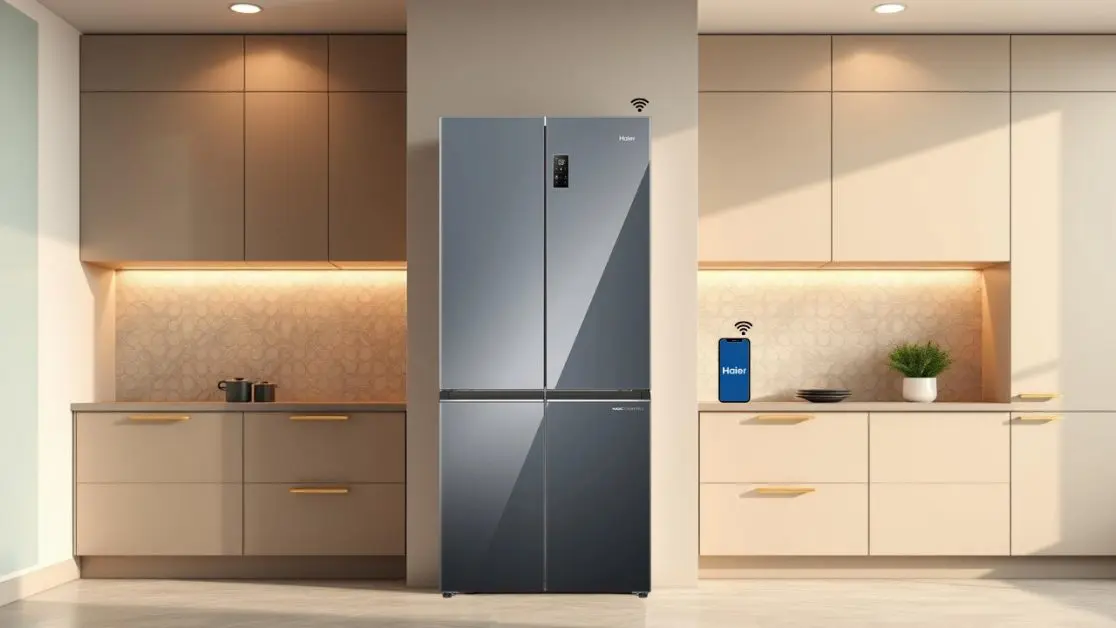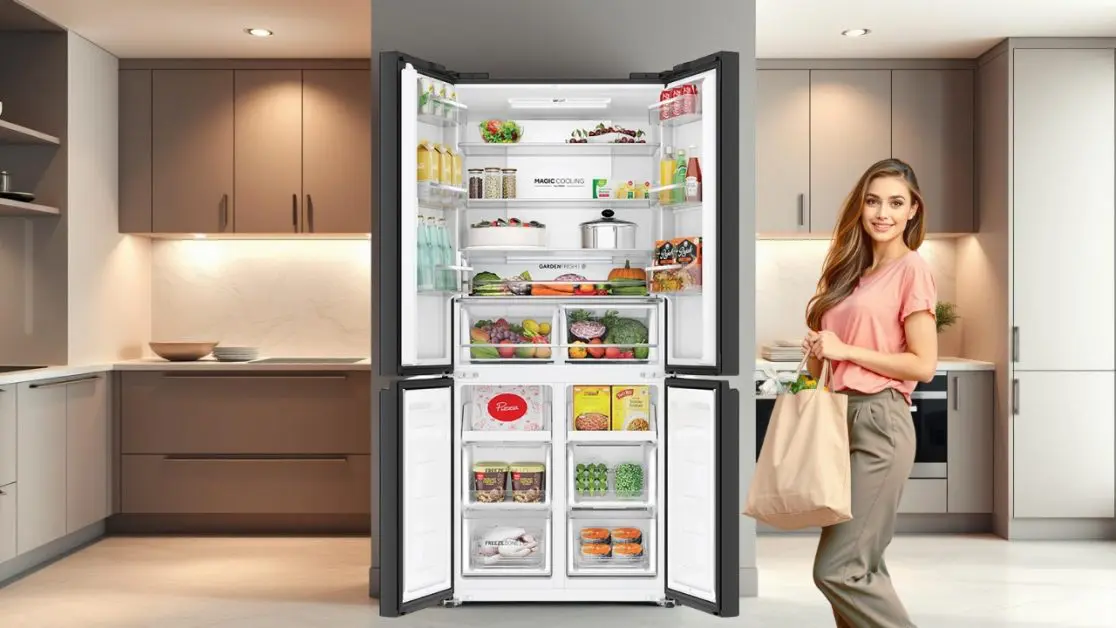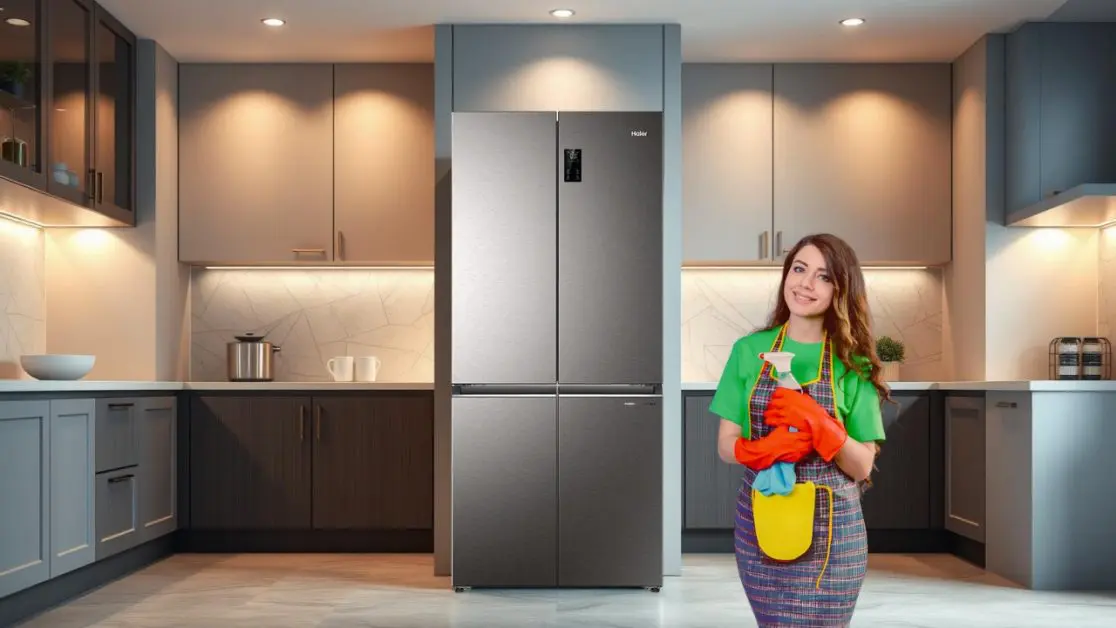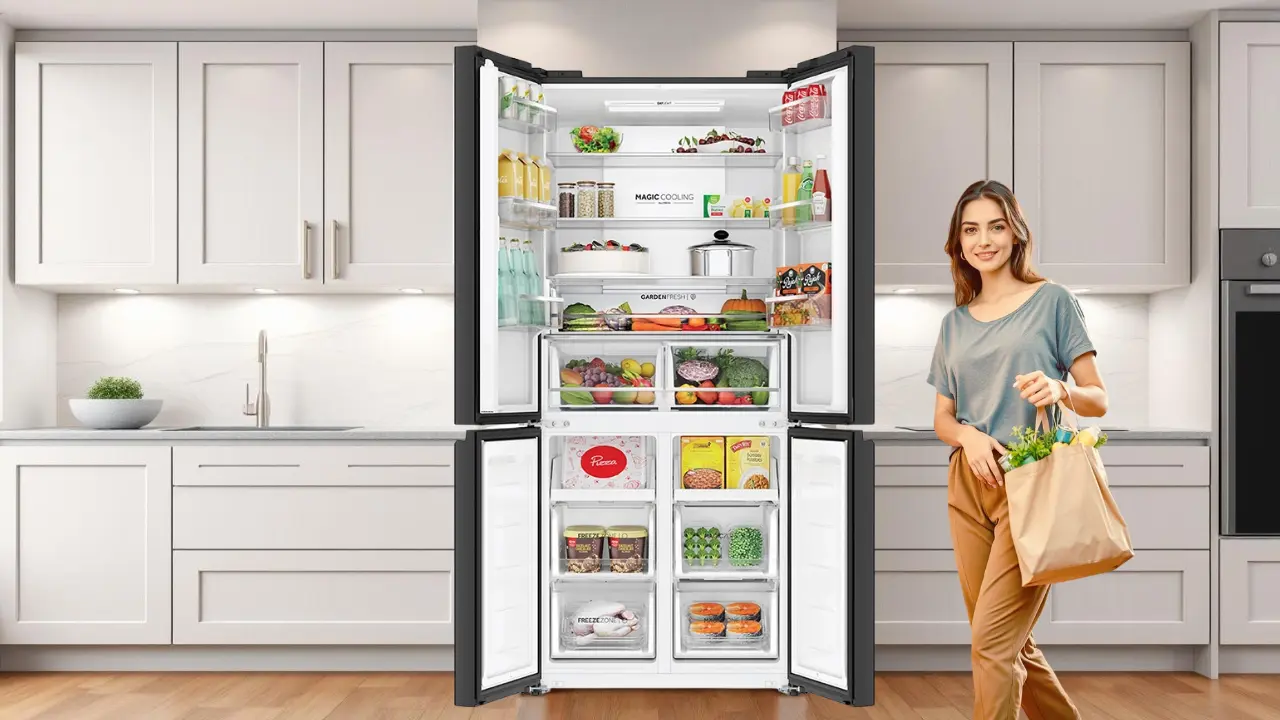You’ve got this amazing, spacious 4-door refrigerator? The kind that’s supposed to make life easier, keep everything fresh, and be the envy of your friends.
But… are you really utilizing its potential, or are you battling overflowing shelves and mystery leftovers?
Are you tired of digging through a chaotic mess, wasting food because you forgot it was there, or dealing with inconsistent temperatures?
Imagine a 4 door refrigerator where everything has its place, where your produce stays crisp, your leftovers are easily accessible, and you’re actually saving money by minimizing food waste. Picture opening those doors and feeling organized, not overwhelmed.
Wouldn’t it be great to unlock the full potential of your investment and have a fridge that truly works for you? We’re going to dive into some simple tips and tricks to maximize your 4-door refrigerator’s capacity and efficiency.
Understanding Your Refrigerator’s Features

Modern 4-door refrigerator technology includes various specialized features that help users preserve food more effectively while enhancing convenience. Understanding these features ensures optimal operation and ease of use.
| Feature | Function |
| Dual Evaporators/Cooling Systems | The appliance contains separate cooling compartments for the fridge and freezer, ensuring odor isolation and better humidity performance. |
| Adjustable Shelves and Drawers | The storage system allows users to accommodate various sizes and irregularly shaped items. |
| Temperature-Controlled Zones | Different temperature controls within compartments help extend food freshness. |
| Ice and Water Dispenser | Users can obtain chilled water and ice cubes from a built-in dispenser without opening the refrigerator. |
| Smart Features | Some models offer Wi-Fi connectivity, allowing users to adjust settings remotely via smartphone applications. |
Reviewing the user manual is crucial, as it provides instructions to optimize each feature based on the specific refrigerator model.
Strategic Organization for Maximum Space Utilization

Zoning and Categorization
Strategic food arrangement improves accessibility and minimizes unnecessary food waste. Organizing storage space into sections ensures better usability.
- Upper shelves: Store ready-to-eat food, leftovers, and beverages.
- Middle shelves: Place dairy products, eggs, and meal-prepped containers.
- Bottom shelves: Store seafood and raw meats in sealed containers to prevent cross-contamination.
- Crisper drawers: Keep fruits and vegetables separate based on their specific moisture needs.
- Freezer drawers: Organize frozen foods by category, such as meats, vegetables, and ready-made meals.
Optimizing Shelf Space
Consider adjusting shelves to accommodate fluctuating storage needs, such as tall bottles and large containers. Using airtight storage containers improves visibility, prevents spoilage, and keeps food organized. This setup enhances the refrigerator’s appearance by making food contents more accessible, reducing the risk of forgotten and wasted items.
Installing shelf liners is a simple yet effective solution, as they catch spills and make cleaning easier.
Drawer Organization
Properly organizing refrigerator drawers is essential for maximizing efficiency. Storage dividers help categorize food while preventing items from getting lost in the back. Labeling drawers improves accessibility, especially when multiple family members use the refrigerator. Utilize the flexible temperature settings in flex-zone drawers to store deli meats and beverages at optimal conditions.
Door Storage Considerations
Placing perishable foods in the door compartments provides easy access, but these sections experience frequent temperature fluctuations. Store condiments, juices, and bottled drinks in the doors, while dairy products and eggs should remain in the main compartment to ensure stable temperatures. Following these simple storage principles will help keep food fresh for longer.
Food Preservation Techniques for Longevity

Implementing proper food preservation techniques extends freshness and reduces waste.
Temperature Management
- The refrigerator should maintain a temperature of 4°C (39°F) or colder, while the freezer should stay at -18°C (0°F).
- Dual evaporators help regulate humidity levels for better food preservation.
- A portable refrigerator thermometer can be used to verify temperature accuracy.
Proper Food Storage
- Store raw meat in sealed containers to prevent leaks and contamination.
- Wrap cheese and dairy products in wax paper before placing them in airtight containers.
- Extend the life of fresh herbs by keeping them in a jar of water, covered loosely with plastic wrap.
Utilizing Temperature-Controlled Zones
Adjust temperature-controlled compartments to preserve specific food categories.
- Crisper drawers: Regulate humidity to keep fruits and vegetables fresh.
- Flex storage zones: Customize temperatures for optimal storage of specific items.
Freezing Best Practices
- Allow food to cool before placing it in the freezer to prevent temperature fluctuations.
- Portion frozen foods individually and label them with expiration dates for easier tracking.
- Arrange frozen items systematically for quick access.
Maintenance and Cleaning for Optimal Performance

Regular maintenance prolongs the lifespan of your appliance while enhancing efficiency and hygiene.
Regular Cleaning Schedule
- Wipe up spills immediately to prevent stains and odors.
- Clean the refrigerator interior with a mild detergent solution every two weeks.
- Vacuum condenser coils every six months to improve energy efficiency.
Ice and Water Dispenser Maintenance
- Clean the ice bin regularly to prevent clogging.
- Follow manufacturer guidelines for replacing the water filter.
Preventing Odors
- Place an open container of baking soda or activated charcoal inside the refrigerator to absorb odors.
- Discard expired or moldy food items regularly.
Door Seal Inspection
- Check the rubber gaskets around the door to ensure they form a proper seal.
- Clean seals with warm, soapy water to prevent mold buildup.
Smart Features and Technological Advantages
Modern refrigerators incorporate smart technology, offering users added convenience.
- Wi-Fi connectivity enables remote monitoring and adjustments via mobile devices.
- Energy-saving modes optimize cooling efficiency while reducing electricity consumption.
- Inventory management systems track food expiration dates, helping minimize waste.
Utilizing these smart features enhances kitchen productivity and promotes sustainable food storage practices.
Haier 520L Mirror Glass 4-Door Convertible Refrigerator
The Haier 520L Mirror Glass 4-Door Convertible Refrigerator is an excellent choice for families seeking efficient storage solutions with a stylish, modern design.
Key Features:
- 520L storage capacity: Includes 350L for refrigeration and a 90L convertible compartment that can function as either a fridge or freezer.
- My Zone feature: Allows users to designate a specific section with adjustable temperatures to maintain food freshness and aroma.
- India’s largest LED surface display (2×2 feet): Provides bright and even interior illumination for enhanced visibility.
- Digital control panel: Offers an intuitive interface with an elegant aesthetic.
- Smart Sense AI technology: Learns user patterns and optimizes temperature settings for energy-efficient cooling.
- Haismart App compatibility: Enables remote monitoring and control via smartphone.
Haier India continues to develop advanced refrigerator models that combine innovative design, smart functionality, and eco-friendly performance, offering users a seamless and efficient refrigeration experience.
Explore the range of Haier India home appliances to experience seamless kitchen solutions that cater to modern lifestyle needs.

